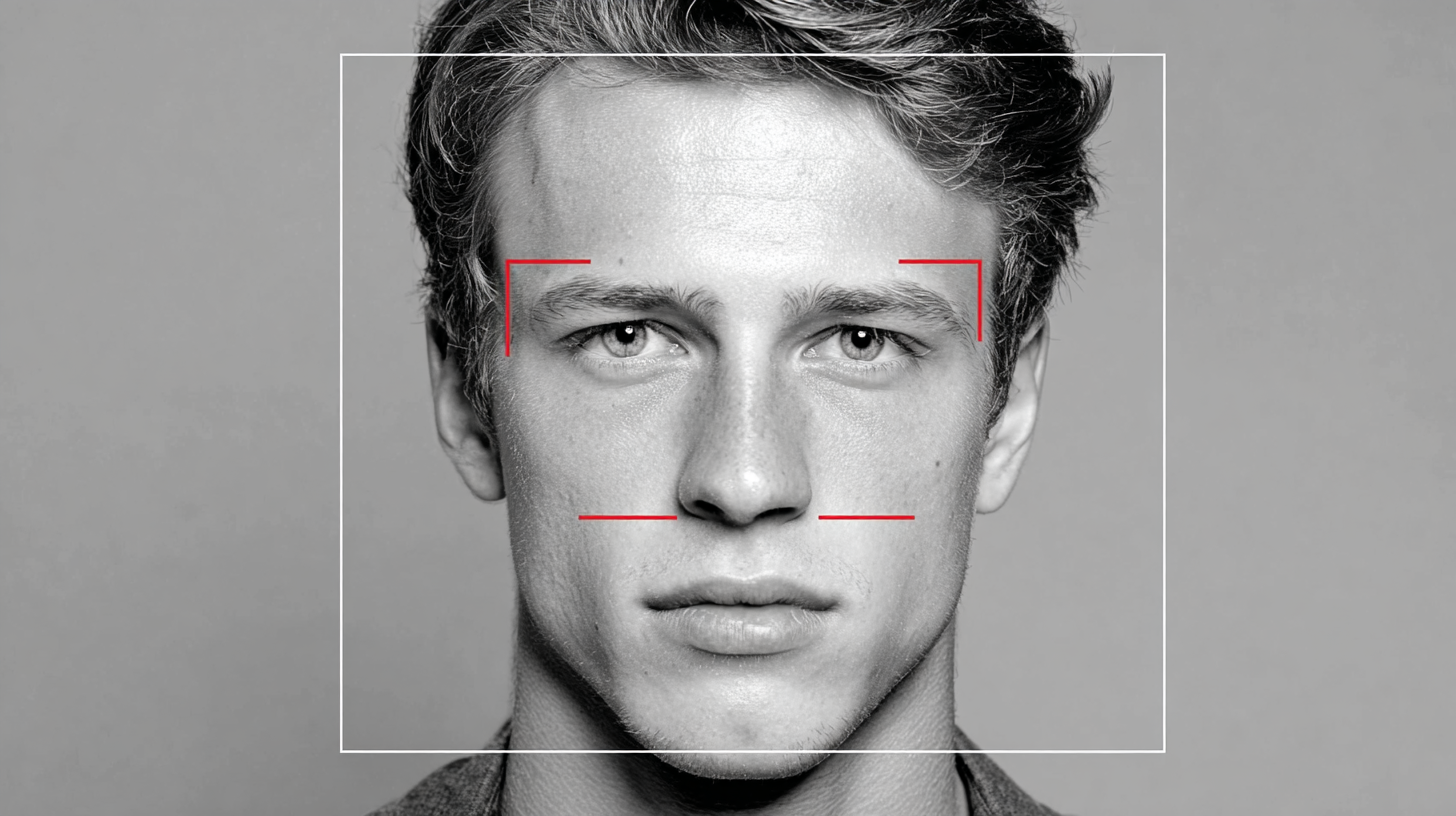Mastering International Standards for Best Face Verification Import and Export Compliance Guide
In today's interconnected world, the importance of adhering to international standards in face verification technology cannot be overstated. As reported by industry analysts, the global face recognition market is projected to reach approximately $9.6 billion by 2022, with a compound annual growth rate (CAGR) of 16.6% from 2016 to 2022. This growth underscores the critical need for businesses to navigate the complexities of import and export compliance in face verification systems. With various regulatory frameworks emerging worldwide, mastering these international standards is essential not only for ensuring compliance but also for staying competitive. This blog will explore key strategies and guidelines for effective compliance, enabling organizations to leverage face verification technologies while adhering to industry production standards.

Understanding the Importance of International Standards in Face Verification Technology
In today’s global marketplace, the integration of face verification technology is becoming increasingly prevalent across various industries. However, as companies seek to import and export these sophisticated systems, understanding international standards becomes paramount. These standards act as a benchmark for quality, safety, and compliance, ensuring that face verification technologies operate effectively and ethically across different regions.
International standards in face verification not only enhance the accuracy and security of biometric systems but also establish trust among consumers and businesses. They facilitate interoperability, allowing systems developed in one country to seamlessly function in another. Additionally, adherence to these standards helps mitigate risks related to privacy violations and data breaches, which are critical concerns in today’s digitized world. Recognizing and implementing these standards is essential for organizations aiming to navigate the complex landscape of international trade while ensuring that their face verification technologies meet the highest quality and ethical guidelines.
Key Regulatory Bodies Influencing Face Verification Compliance in Global Markets
In the rapidly evolving realm of face verification technology, understanding the key regulatory bodies that influence compliance in international markets is paramount. Organizations must familiarize themselves with the guidelines set by regulatory authorities such as the European Union's General Data Protection Regulation (GDPR) and the California Consumer Privacy Act (CCPA). These regulations shape the landscape for data protection and privacy, making compliance not just a legal obligation but also a competitive advantage in the global marketplace.
When navigating international standards, companies should keep the following tips in mind. First, maintain a robust documentation system to track compliance with different jurisdictions. This will simplify audits and demonstrate a commitment to legal standards. Second, invest in ongoing training for your team regarding evolving regulations. Educating employees about the nuances of face verification laws can minimize risks associated with non-compliance, fostering a culture of awareness and diligence.
Lastly, actively engage with industry groups and forums that focus on regulatory developments in face verification technology. These platforms can provide valuable insights and updates on changing regulations, allowing businesses to adapt their strategies and maintain compliance in a proactive manner. Staying informed is key to mastering international standards in this competitive field.
Mastering International Standards for Best Face Verification Import and Export Compliance Guide
| Regulatory Body | Region | Key Regulations | Impact on Face Verification |
|---|---|---|---|
| European Data Protection Board (EDPB) | Europe | GDPR | Regulates data processing and requires consent for biometric data use. |
| Federal Trade Commission (FTC) | USA | FTC Act | Prohibits deceptive practices and sets standards for consumer data privacy. |
| Personal Information Protection and Electronic Documents Act (PIPEDA) | Canada | PIPEDA | Requires organizations to obtain consent for the collection of personal information. |
| Information Commissioner's Office (ICO) | UK | Data Protection Act 2018 | Implements GDPR in the UK with specific guidelines for biometric data. |
| Asia-Pacific Economic Cooperation (APEC) | Asia-Pacific | APEC Privacy Framework | Encourages data protection initiatives across member economies with an emphasis on cross-border flows. |
Analyzing Compliance Challenges Faced by Chinese Manufacturers in Face Verification
Chinese manufacturers in the face verification technology sector are navigating a complex landscape of international compliance standards. As global demand for biometrics rises, these manufacturers face significant challenges aligned with regulatory requirements in various regions, especially concerning data privacy, user consent, and cybersecurity. The divergence in regulations, such as the EU’s General Data Protection Regulation (GDPR) and the U.S. data protection laws, complicates efforts for compliance. Consequently, manufacturers must invest not only in technological development but also in understanding and adapting to these multifaceted legal frameworks.

Moreover, the rapid pace of innovation in face verification technology amplifies the compliance challenges. While striving to enhance their products, manufacturers must ensure that each new feature adheres to existing regulations, which often undergo modifications in response to emerging privacy concerns. This situation creates a pressing need for ongoing training and development in compliance for teams involved in product design and marketing. A proactive approach will mitigate the risk of non-compliance and foster trust with international partners and customers, ultimately paving the way for successful market entry and sustained growth in the global landscape.
Impact of Non-Compliance on Trade: Financial and Legal Consequences for Exporters
Non-compliance with international face verification standards can have severe financial and legal repercussions for exporters. According to a recent report from the International Chamber of Commerce, approximately 75% of companies that fail to adhere to regulatory standards face penalties exceeding $500,000. This alarming statistic highlights the necessity for exporters to rigorously implement compliance protocols to avoid hefty fines that can significantly impact their profitability.

In addition to financial penalties, exporters risk facing legal actions that can further complicate their operational landscape. A study published by the Compliance and Regulatory Affairs Journal indicates that companies involved in non-compliance cases experienced an average of two years of litigation, leading to substantial legal fees and loss of market share. Furthermore, these legal battles can damage a company’s reputation in the global marketplace, resulting in long-term ramifications that hamper business relations and future growth opportunities. Given these stakes, it is imperative for exporters to prioritize compliance with international standards to safeguard their business interests and maintain competitiveness.
Strategies for Ensuring Smooth Import and Export Processes in Face Verification Equipment
In today's global marketplace, navigating the import and export processes for face verification equipment is crucial for businesses looking to thrive. To ensure a seamless experience, companies must understand both the technical and regulatory aspects involved.
First and foremost, it is essential to familiarize yourself with international standards governing face verification technologies. These standards often dictate the specifications and protocols that must be followed during the import and export of such equipment, impacting everything from product design to packaging and labeling.
Secondly, employing comprehensive compliance strategies is key to avoiding potential pitfalls. This includes keeping abreast of changes in trade regulations, ensuring accurate documentation, and engaging with customs brokers who specialize in high-tech equipment.
For instance, proactive communication with regulatory authorities can clarify any uncertainties and facilitate smoother transactions. Moreover, investing in training for your workforce can enhance understanding and compliance, ultimately leading to more efficient operations. By adopting these strategies, companies can successfully navigate the complexities of international trade, ensuring that their face verification equipment meets global market demands while remaining compliant with stringent regulatory frameworks.